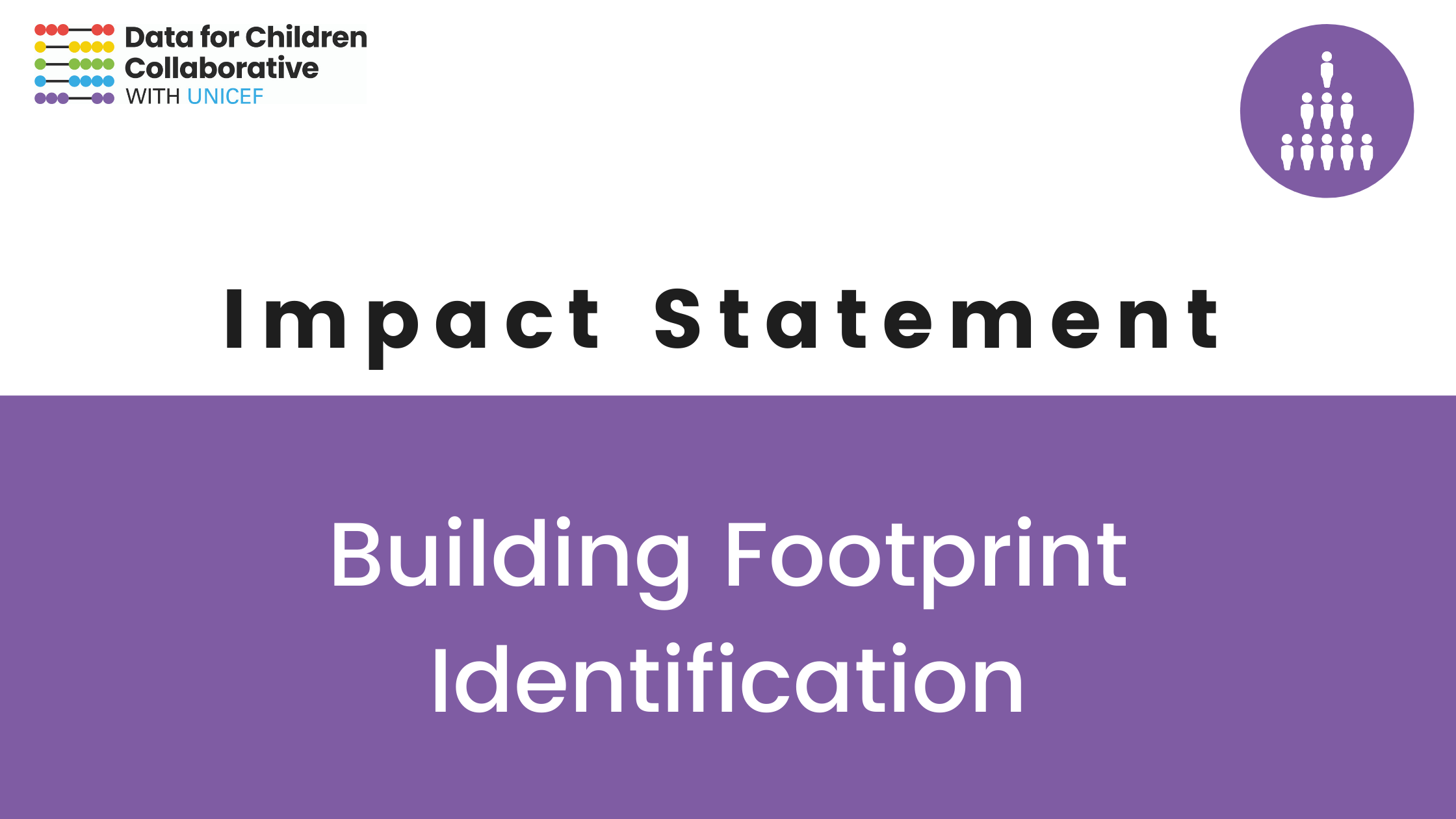What Next? Building Footprint Identification
Now that our Building Footprint Identification team has successfully completed their initial piece of work, we thought it would be a great opportunity to reflect on the impacts of the project. Our project team from UNICEF and the University of Edinburgh have worked collaboratively on this piece of work to develop a methodology that is both sustainable and tailored to UNICEF’s needs.
UNICEF is currently working in Chad and Mozambique to improve target population estimates at the local level in order to better support health services planning and delivery. The larger project aims to explore if we can create a model that is better able to distinguish and systematise building types using satellite images, in turn providing better population estimates at a local level. This will help to support health services and delivery, with a goal to initially inform immunisation programming, but with scope to be transferable to other programmes in the future.
This first phase of the project involved performing an extensive literature review on population estimates and building footprint identification, as well as analysing the existing databases on estimated population density and building footprints to see if they are sufficient for UNICEF’s needs. The team then assessed the performance of existing methods, both from reported performance in the literature and from running available tools on data that is readily accessible, to explore if there is adequate and relevant data available for more extensive machine learning approaches. This enabled the team to identify any gaps in the data and methods before moving to further project phases. We are delighted that the outputs from this project have successfully laid the foundations for a second piece of work, which you can read all about here.
“The project offered an avenue to create new partnerships within the University and with UNICEF for future projects towards meetings sustainable development goals.”
Below you can find our Impact Statement, which details the key ‘need-to-know’ facts and overall achievements of the project. This forms a part of our Responsible Innovation framework, and helps us to track the impact, achievements and any lessons learned from our project portfolio.

